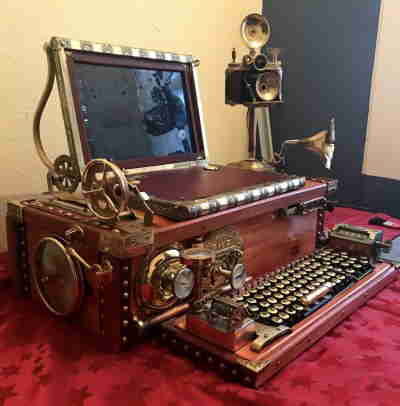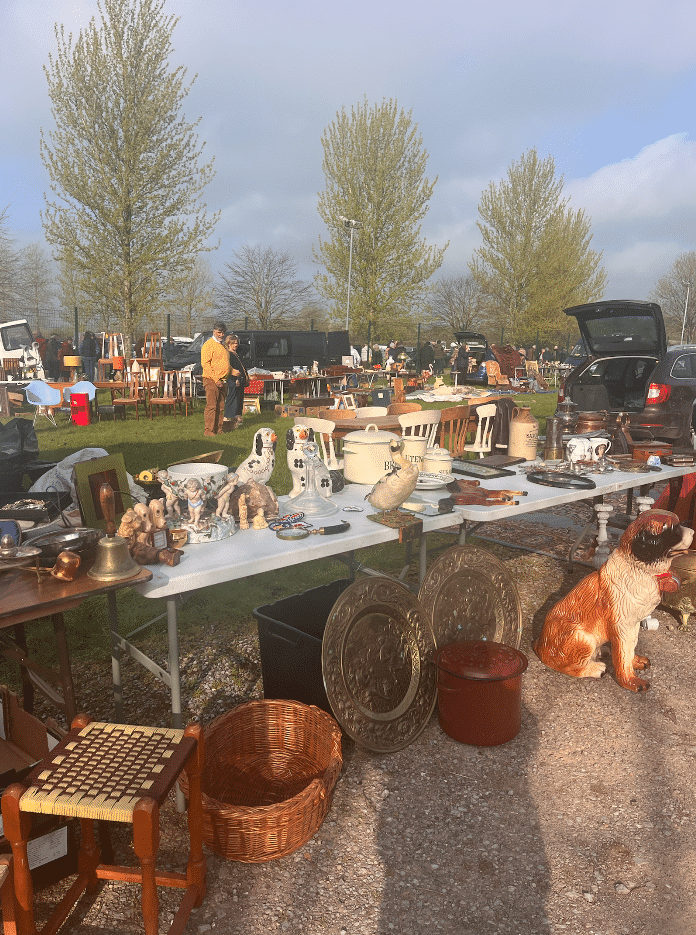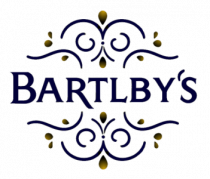I’ve recently added an SEO plugin to my website to help me write things that rank better on Google. Possibly I’m behind the curve here because AI is changing how we interact with online content but that’s not particularly relevant here.

What I’m really interested in is how the internet and things like SEO (Search Engine Optimisation) are shaping how antiques and the antique/vintage trade more broadly are presented.As well as talking about my very limited experience in creating online content I’m going to look at a few other businesses to see what they do and ask why they do what they do in the way that they do it. So lets start with my SEO plugin.
Using Yoast for SEO
The plugin I’m using is a tool called Yoast and it’s a popular SEO plugin for websites built using WordPress. The plugin analyses what I write and then tells me how well I’m doing with regards SEO. It analyses the readability of what I write, how accessible the language is and also looks at both links within my site and to external sites. The idea is to improve how search engines assess the content and to therefor have your content rank better in search results. Of course Google has lots of data about how users interact with online content and prioritises content that they believe users will prefer. So what have I learned about what I write?
Well firstly my language isn’t particularly inclusive; too many long words and too many sentences with more than twenty words. I’m OK at writing fairly focused content but to be good I’d have to write pieces with a narrower focus. I think the internet is full of such content and I think too often that content is relatively shallow, with the same ‘facts’ presented in multiple ways through the text. Search engines like this because it offers clear signals as to the what the article is about. Right now my content doesn’t have lots of links, in part because this is a new project and I shall go back an improve that at a later date. But in just a few days of installing this plugin I’m aware that its subtly shaping how and what I write and that’s made me think more broadly about how the internet is shaping the presentation of the antique/vintage trade.
The Early Internet
When the internet first became a thing it was populated with enthusiasts who were suddenly able to make contact and share information with like-minded people across the world. Its hard to find sites like that now but here’s one on Silver Tea-Tongs . While this site seems to have been built to promote a book as a rule these sorts of sites were more interested in sharing their owner’s passion for and knowledge of a topic than in selling things. But that soon changed.
The existence of a worldwide customer base of enthusiasts was a golden opportunity, especially for some of the more niche businesses typical of the antiques world. The only problem was how to get their attention and this was where SEO came in. By creating content that ranked well for keywords relevant to their niche these businesses were able to push themselves to the top of Google’s search results and so be found by those same enthusiasts. This changed the nature of the content that was being written about antiques.
Blogging to Drive Traffic
Where once enthusiasts had shared their specialist knowledge now businesses created articles full of general information that served several purposes; they were designed to rank well on Google and to form the top of a marketing funnel. Articles like ‘What are the most collectable antique toys and games?’ and ‘The 5 most valuable sought after sterling silver flatware patterns’ are fairly representative. They’re full of keywords for relevant searches and Google likes the list format but the information is fairly superficial. The aim is not to educate the reader but to capture their attention and get them to click the next link. While initially successful this was a strategy that’s had diminishing returns over time.
The first problem was that ever more people were trying to use it which meant it was ever harder to rank well and to get the browser to click on your content, especially when even national newspapers were writing about antiques. The second problem was that even if you could get someone to click on your content and then get them to buy something only rarely did that translate into repeat business. They’d captured the click but not the customer! Attempting to address this many businesses set up accounts on Facebook and other social media platforms, mostly with little success; Facebook followers aren’t particularly engaged with your content if they see it all. The platform that was different, that offered a real opportunity to build an engaged audience, was Youtube.

Youtube has billions of users watching untold amounts of content everyday and much of what they watch is from Youtube channels they already know and to which they subscribe. Subscribers to a channel are more likely to watch videos from that channel and to watch more of each video. So how has Youtube changed how antiques and the antique/vintage trade is presented?
If the SEO had demanded content that prioritised keywords and the Google algorithm over sharing specialist knowledge the move to Youtube has demanded the creation of content that is entertaining. The businesses that seem to have succeeded most with Youtube are those that have understood this.
My favourite example of this is the Youtube channel of the late Michael Baggott, who really didn’t get the need to be entertaining. Baggot was one of the UK’s leading experts on antique silver. If you’re interested in antique silver there’s a wealth of information on his channel – I think there’s 40 minutes of video just on Tea-Tongs but there are few subscribers and not that many views of his videos. Perhaps that’s not fair because the man died before he had a chance to make something of his channel.
A better place to look might be the channel Antiques Arena run by Walter O’Neill. Its not my intention to denigrate Mr O’Neill in any way, he’s made the internet work for him but if you look at his most recent videos you’ll see have maybe 500ish views over a couple of weeks. Compare this to Laura Caldwell whose videos will get at least 50,000 views over the same timeframe.

I think the comparison is interesting because both O’Niell and Caldwell seem to buy much of their inventory from car boot sales, charity shops and flea markets and both have videos of themselves sourcing antique and vintage items in these settings. The only reason I can see for the massive difference in the view counts is that one is more entertaining than the other.
As I’ve said I’ve no intention to denigrate Mr O’Neill. He has a business that runs exclusively from his own website and that’s not a small thing. Caldwell on the other hand has a sufficiently large audience that she seems to have more choices as to how she runs her business.
With that many views Youtube is paying her for the time she spends out sourcing stock. She also runs holidays/tours where she takes groups to destinations in both the USA and Europe where at least part of the time is spent in local markets looking for ‘vintage treasures’. These tours provide plenty of content for her Youtube channel. Lastly she has a website called Left Coast Revivals which uploads all its new stock on the first Friday of the month, creating a sense of urgency and scarcity (where perhaps none actually exists) that encourages her customers to buy things before someone else does.
To me its that last point that’s really interesting here. The customers really are hers, they follow her on Youtube, where they might even see her buying something and decide they want it (despite having seen what she paid for it) and the only way to be sure of getting it is to be quick when stock is uploaded on the first Friday. In the video’s themselves the objects, however great they may be, are really just props around which an entertaining story is told. The story is some version of a treasure hunt – there may be obstacles in the way but the heroine fights through them all to find the treasure.
These sort of videos are common in the reseller space on Youtube – titles like ‘Best Thrift Haul Ever’ or ‘Is it Really Worth £900’ or ‘Turning £10 into £1000’ etc. But whoever creates them the real purpose is to capture and audience (and maybe get paid by Youtube for doing it).
Another seller who seems to have been very successful in doing just that is Jason Adams, a jewellery specialist who also deals in decorative arts. Rewatching some of his videos I’m struck by how many of them follow the ‘treasure hunt’ narrative in some way. What’s also interesting is that the objects that seem somewhat peripheral in some seller’s videos are brought centre stage. In many of his videos he barely appears and the action (if you can call it that) is all happening in the lightbox within which he’s presenting the pieces of jewellery.
And some of his videos are more similar to Micheal Baggott’s in that they seem genuinely to focus on educating those watching about some aspect or type of jewellery. But even here it’s his ability to engage with the audience in an entertaining manner that elevates his videos. While his videos don’t have the huge audience that Laura Caldwell’s have he’s still been able to garner enough of an audience to run live sales on Youtube. These aren’t auctions but fixed price sales and most of what he presents find a buyer among his loyal following. It’s a model that requires work but for those that make it work its probably (for now) the route to a sustainable antique/vintage business.
Conclusion
No doubt the internet has changed and will continue to change how vintage and antique goods are presented to and sold to the public. Where once the internet was a place where buyers could acquire antiques and collectibles they’d struggled find in the real world, it very soon upended concepts of rarity and desirability and became a place where, often, too much stock chases too few buyers. Some sellers have found a way to overcome this by focussing on buyers, on capturing an audience. In some ways this has brought the antiques trade full circle, to a way of working not so dissimilar to the way dealers once worked with mailing lists and catalogues.
